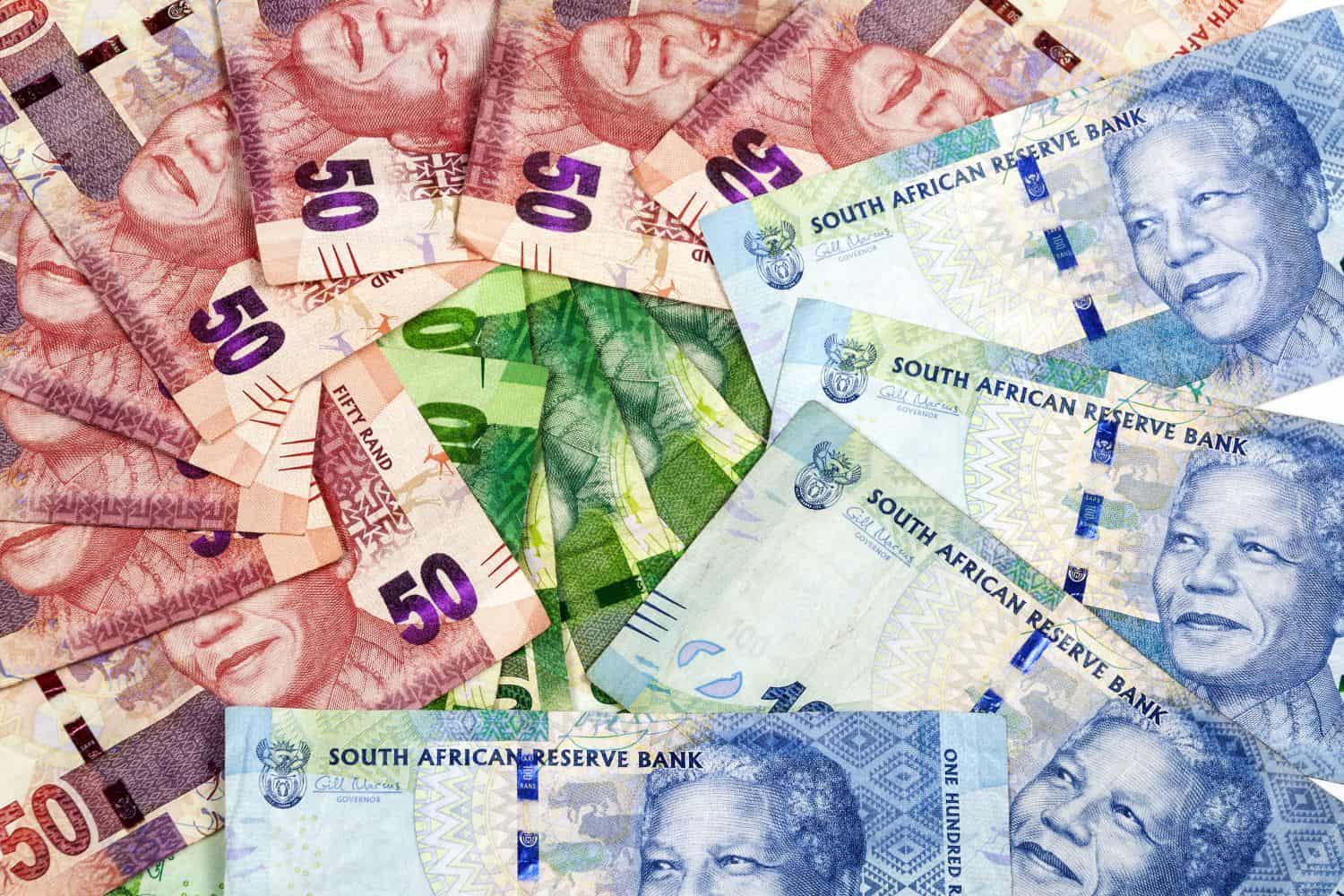Analysis of credit providers shows that informal lenders are cashing in on people who cannot get (more) bank loans.

Money used to make the world go ’round, but it seems credit took over this role after consumers spent all their own money. However, one can run out of credit too.
A study has shown that debt levels among SA consumers are rising again, after declining slightly during the months government closed shops for weeks on end in 2020 in a bid to stop the spread of Covid-19.
The study by Genesis Analytics, in partnership with the Financial Sector Conduct Authority (FSCA), concludes that over-indebtedness remains a challenge in SA. It found that more than 50% of South Africa’s credit-active consumers can be considered to have too much debt, which resulted in bad credit records for 48% of all borrowers.
It is hard to believe that nearly half of the 27 million adults using credit have difficulty keeping up with debt repayments.
“Over-indebtedness is linked to national economic conditions and exacerbated by the Covid-19 pandemic. Slow economic growth and high unemployment, coupled with rising prices for food, petrol and other basic goods have had a significant impact on the credit needs of South Africans and their ability to repay debt,” say the authors of the report, concluding that 95% of low-income individuals used debt to pay for basic needs such as food, clothing, transport and other bills.
Necessities
Genesis Analytics found that the majority of credit-active consumers spend borrowed money to finance necessities. Some 43% of the surveyed population borrowed money to buy food and 11% used debt to buy clothes.
“As expected, this trend is dominant amongst low-income individuals (earning less than R1 500 per month), grant recipients (earning around R1 500 per month) and individuals with informal jobs (earning more than R1 500, but less than R3 000),” says the FSCA report.
“Borrowers in the high income group acquire credit to finance the acquisition of assets such as motor vehicles or to build, purchase or renovate a house; while only 5% of the low-income individuals could invest in the same way.
“The fact that credit is used to cover basic consumptive expenditure or to cope with financial shocks is indicative of the high levels of over-indebtedness of lower income segments and low levels of financial resilience.”
It seems uncertainty and any financial crisis serve to bolster responsible behaviour among consumers, but it only lasts a while – and low-income households remain stressed throughout. Household debt to disposable income decreased after the financial crisis of 2008 and reached a low in 2017, but started to increase again between 2017 and 2020.
In 2008, debt to disposable income was at 86%. It decreased to 72% in 2017. Thereafter, it rose steadily to approximately 77% in 2020, but declined slightly during in 2021.
Now it is increasing again as consumers start to spend reserves they might have accumulated during months of forced austerity, and due to their need to ward off renewed hardship.
Banks vs loan sharks
While the FSCA notes that SA’s credit market is highly developed, well-regulated, and that the formal banking sector provides credit to almost half the population, and other parts of the report point out that SA has enough capital available for investment to satisfy capital requirements, many people are reliant on ‘informal’ credit providers.
“South Africa’s consumer credit market is highly regulated, according to the World Bank, and conforms with several good practices for financial consumer protection,” notes the FSCA.
It says the credit market is large, well-developed and formally provides credit to more than 27 million people, equivalent to 67% of the adult population. The number of individuals with an active credit account reached a peak in 2020, as heightened financial distress due to the Covid-19 pandemic drove an increasing number of consumers to acquire credit.
The number of credit active consumers rose from 17.12 million in 2017 to a peak of 27.4 million in 2020.
There are 7 837 credit providers registered with the National Credit Regulator (NCR), ranging from banking institutions to non-banking lenders such as micro finance institutions, vehicle financiers and retailers offering store credit.
An analysis of the value of consumer credit shows that credit extension increased by 4% per annum between 2015 and 2020. In 2020, mortgages and secured credit comprised 41% and 31% of the total loan value respectively, while unsecured credit represented 15% of loan values.
“However, when measuring by number of loan agreements, credit facilities and short-term loans represent 55% and 21% of the market [respectively],” says the report, indicating that consumers representing a large section of the population take out small, short-term loans.
Thus, people are borrowing out of desperation rather than to buy long-term assets.
Banks are the largest providers of credit, by value. Banks provided more than 80% of the R2 trillion worth of consumer debt in 2020, but only 44% of the number of loan accounts.
Retailers account for the second largest share of lending, supplying 38% of credit by number of accounts.
However, the report notes that more than half of all loan applications in the formal sector are rejected, “pushing more people to seek informal credit”.
Risky, but necessary?
The informal credit market remains endemic in SA and poses a significant challenge to the sustainable and responsible use of credit, warns the FSCA.
“Based on amendments to the National Credit Act (NCA) in 2016, all credit agreements, regardless of the amount, are considered illegal if the supplier is not registered with the NCR,” says Genesis Analytics.
“Historically, South Africans have made use of informal means to acquire credit. For many decades, black South Africans were unable to access credit formally. As a result, informal credit and lending models arose to fill a deep need.
“Unregistered lenders have long been operating in South Africa and are considered to be socially embedded in lower-income communities.”
In 2019, 28% of the surveyed individuals acquired credit formally from a banking institution and only 2% from a micro finance institution, while 28% of individuals borrowed from friends and family. Around 16% borrowed from a stokvel (community-based savings and credit groups) and loan sharks (known as mashonisas).
“While popular in low-income communities, the use of informal lenders exposes consumers to various risks, including high interest rates and dubious collection methods,” says the FSCA.
“Being located within communities, informal lenders can be visited after business hours and are easily accessible. Informal lenders offer a relatively easy-to-understand repayment formula, expressed as total amount repayable rather than an interest rate. For example, you borrow R1 000 and repay R1 300 at month end.
“Since both borrowers and lenders are integrated within the community, this brings in elements of trust and reputation (of both the borrowers and the lenders) that may not be replicable by formal financial institutions,” says the FSCA.
“However, consumers have no legal or regulatory recourse when borrowing from informal lenders. Mashonisas typically have short repayment periods, high interest rates (between 30% and 50% a month) and often dubious collection methods.
“There have been reports of borrowers’ identity documents (IDs) being retained, their bank card pins taken and the direct collection of grant payments, as well as the threat of violence in the face of non-payment,” according to the research.
In essence, this describes a vicious debt cycle.
The large number of people facing over-indebtedness is of concern, says the FSCA, particularly because of the societal risk that arises when consumers are overburdened by debt in perpetuity, leading to disproportionate social and personal harm.
“For the FSCA, finding solutions to consumer over-indebtedness is vital, and an important intervention is education around relief measures. The FSCA, in collaboration with the NCR and other regulatory bodies, has been proactive in educating consumers on the debt relief measures put in place to alleviate consumers from chronic over-indebtedness,” says the report.
By Adriaan Kruger
This article first appeared on Moneyweb and was republished with permission. Read the originals article here.






